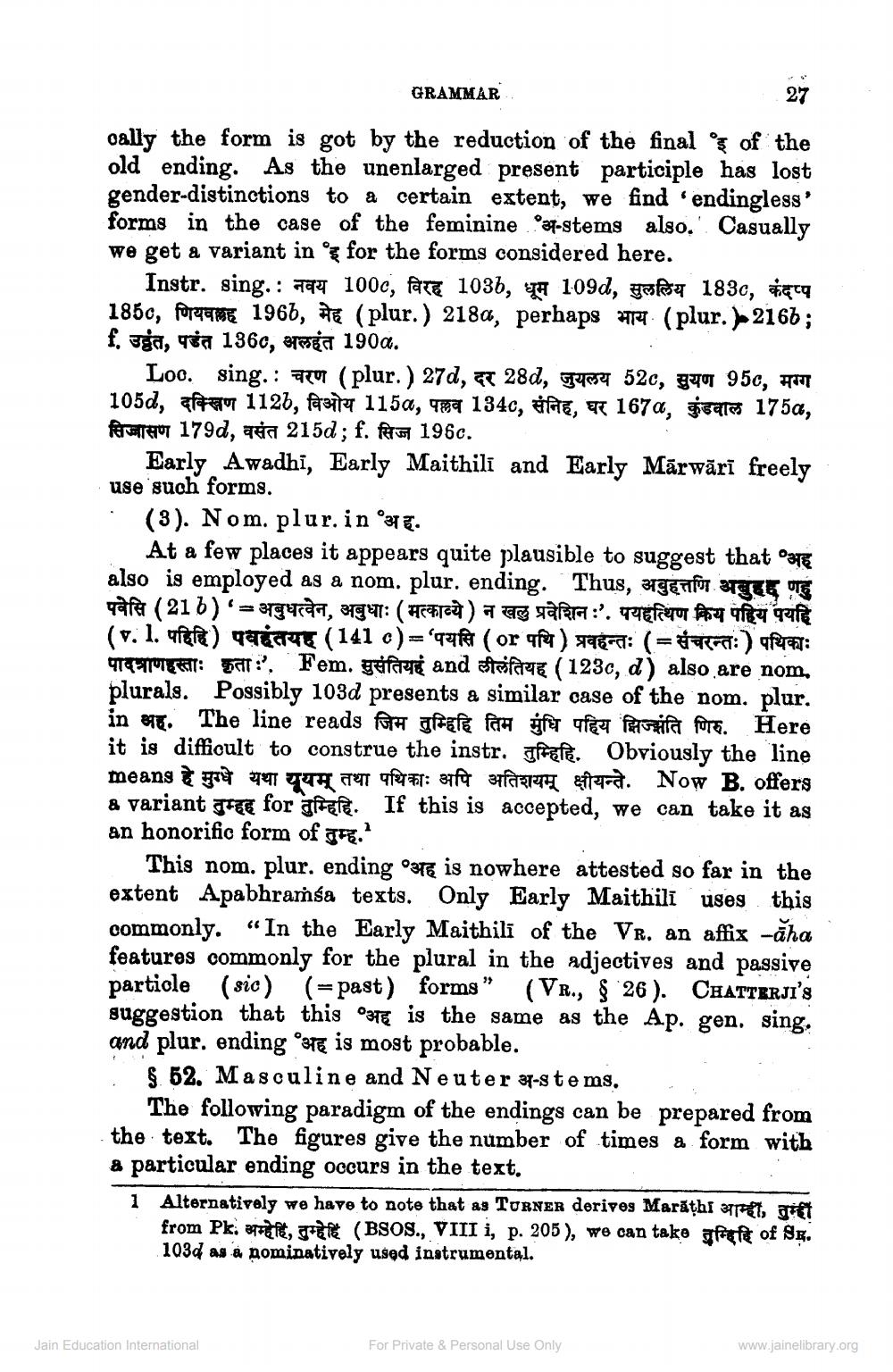________________
27
cally the form is got by the reduction of the final of the old ending. As the unenlarged present participle has lost gender-distinctions to a certain extent, we find 'endingless' forms in the case of the feminine-stems also. Casually we get a variant in for the forms considered here. Instr. sing. : नवय 185c, for 1966, f. उट्टंत, पडंत 1360, अलहंत 190.
GRAMMAR
100c, विरह 1036, धूम 109d, सुललिय 183c, कंदप्प (plur.) 218a, perhaps
(plur.)2166;
Loo. sing. : चरण (plur. ) 27d, दर 28d, जुयलय 52c, सुयण 95c, मग्ग 105d, दक्खिण 1126, विओय 1150, पल्लव 134c, संनिह, घर 1670, कुंडवाल 1750, सिज्जासण 179d, वसंत 215d; f सिज्ज 196c.
Early Awadhi, Early Maithili and Early Marwari freely use such forms.
(3). Nom. plur. ing.
At a few places it appears quite plausible to suggest that also is employed as a nom. plur. ending. Thus, argentor eget e पबेसि (216) ' = अबुधत्वेन, अबुधाः (मत्काव्ये) न खलु प्रवेशिन : '. पयहत्थिण किय पहिय पयहि (v. 1. पहिहि ) पवहंतयह ( 1410 ) = ' पयसि ( or पथि ) प्रवहन्तः (= संचरन्तः ) पथिकाः पादत्राणहस्ताः कृता:' Fem. सुसंतियहं and लीलंतियह ( 123c, d) also are nom plurals. Possibly 103d presents a similar case of the nom. plur. in अह. The line reads जिम तुम्हहि तिम मुंधि पहिय झिज्यंति णिरु. Here it is difficult to construe the instr. ff. Obviously the line means हे मुग्धे यथा यूयम् तथा पथिकाः अपि अतिशयम् क्षीयन्ते Now B. offers a variant for af. If this is accepted, we can take it as an honorific form of तुम्ह. '
This nom. plur. ending is nowhere attested so far in the extent Apabhramsa texts. Only Early Maithili uses this commonly. "In the Early Maithili of the VR. an affix -aha features commonly for the plural in the adjectives and passive particle (sic) (=past) forms" (VR., § 26). CHATTERJI'S suggestion that this is the same as the Ap. gen. sing. and plur. ending is most probable.
§ 52. Masculine and Neuter-stems.
The following paradigm of the endings can be prepared from the text. The figures give the number of times a form with a particular ending occurs in the text.
Jain Education International
1 Alternatively we have to note that as TURNER derives Marathi efl, gift from Pk., (BSOS., VIII i, p. 205), we can take afft of SE. 103d as a nominatively used instrumental.
For Private & Personal Use Only
www.jainelibrary.org




